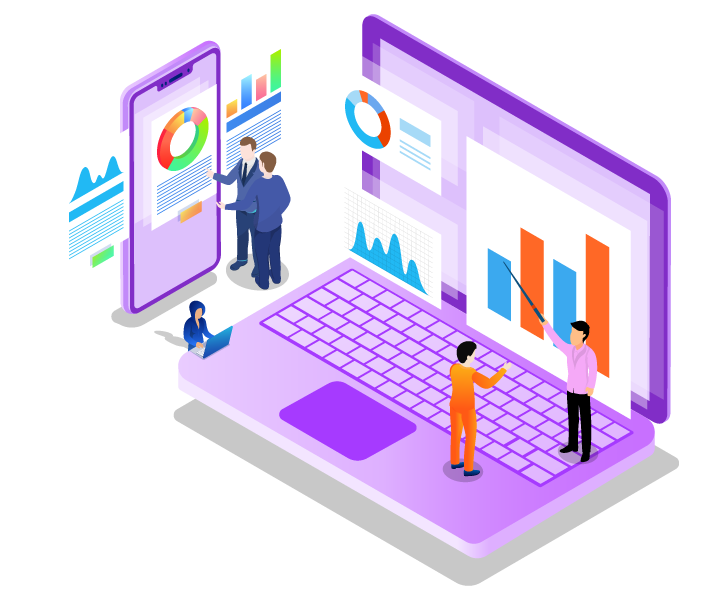The way we maintain and manage devices in today’s workplace has been drastically altered. As the world shifts to remote and hybrid work arrangements, the old method of distributing laptops within the office has given way to an operationally complicated process known as Device Lifecycle Management (DLM). Managed Desktop Service (MDS) is now a key component of this transformation, helping to streamline organizations’ processes and improve users’ experience.
Device Lifecycle Management (DLM) Also known as DLM, is the process of managing a device’s lifecycle from the moment it is purchased until it’s retired. This involves a number of processes, like procurement, provisioning maintenance and disposal at the conclusion of the life. DLM was an easy process it was carried out in a traditional office environment. However, remote working has added new levels of complexity.

In the current environment IT managers are now faced with the challenges of managing assets and logistics at every stage of the device’s lifecycle. The need to address the requirements of hybrid and remote workers is the driving force behind this shift. It’s now imperative for companies to implement effective strategies. Managed Desktop Service is one of the most sought-after.
Remote work enabled by Managed Desktop Services
Managed Desktop Service (or MDS) is a comprehensive software solution designed to simplify management of the devices of users. It provides a comprehensive approach to the provisioning of devices, their maintenance, and support, making it a vital asset for IT managers. Here’s how Managed Desktop Service is helping organizations navigate the challenges of remote work:
Managed Desktop Service aims to enhance end-user experiences. It solves the common problems faced by remote workers like delayed equipment onboarding, long software updates as well as the slow repair and replacement process. MDS enhances employee satisfaction and productivity by making sure employees are able to access the resources and tools they need at the time they are required.
Streamlining Device Provisioning Managed Desktop Service simplifies the process of setting up new devices to remote employees. With MDS businesses can quickly distribute laptops and other equipment to new employees to ensure they are equipped with the tools they require right from the beginning. This reduces the stress of employees waiting to receive their devices and experiencing delays in starting their work.
Managed Desktop Service allows IT teams to manage patches and software updates more efficiently. You can schedule updates in uninterrupted times, which makes sure that employees are not affected while they work on their tasks. This eliminates the possibility of employees facing interruptions when they are in meetings or on video calls.
Fast Repairs and Replacements: In a remote workplace the prompt repair or replacement of devices that are malfunctioning is vital. Managed Desktop Service providers have often established robust support systems to ensure that employees get prompt assistance when their devices encounter issues. It not only reduces downtime, but also the risks of cyber-attacks that result from the use in emergencies of personal devices, or insecure devices.
Cost-Efficiency: Companies can cut expenses by outsourcing management of the end-user device to Managed Desktop Services providers. This means that they no longer need to hire staff in-house to manage devices, decreases disruptions caused by obsolete equipment and increases the cost-effectiveness for managing the lifecycle of devices.
The impact of employee engagement and turnover
An efficient, smooth device lifecycle management process directly affects employee retention and engagement. Employees who are dissatisfied by difficulties with their device could become disengaged or seek out alternative possibilities. Inefficient DLM can have a significant effect on engagement of employees.
On the other hand, businesses that put their money into Managed Desktop Service (MDS) and effective Device Lifecycle Management can create a positive and engaging working environment. Employees who have access to the top tools, who experience less disruption and receive timely help for any problems, are more likely to stay with their current employers. This can reduce turnover, as well as the training and recruitment expenses that accompany it.
Mitigating Cybersecurity Risks
Cybersecurity is an essential concern for businesses in this age of remote working. Without proper management of devices employees could end up using devices that are unsecure or personal which could pose serious risks to the organization’s data and security of the network.
Managed Desktop Service providers usually have robust cybersecurity protocols in place. They will ensure that all devices are equipped with the most recent security patches and that data is encrypted and protected. This proactive approach helps companies mitigate risks and maintain secure remote working environments.
You can also read our conclusion.
The significance of Managed Desktop Service and Device Lifecycle Management cannot be understated as the work environment continues it’s evolution. These services are essential for companies trying to adapt their operations to hybrid or remote environments. Inspiring the user experience streamlining provisioning of devices, and enhancing security for organizations can boost efficiency, reduce turnover of staff, and create an engaging and safe work environment. It’s not just about keeping current, but also about an efficient and competitive future.